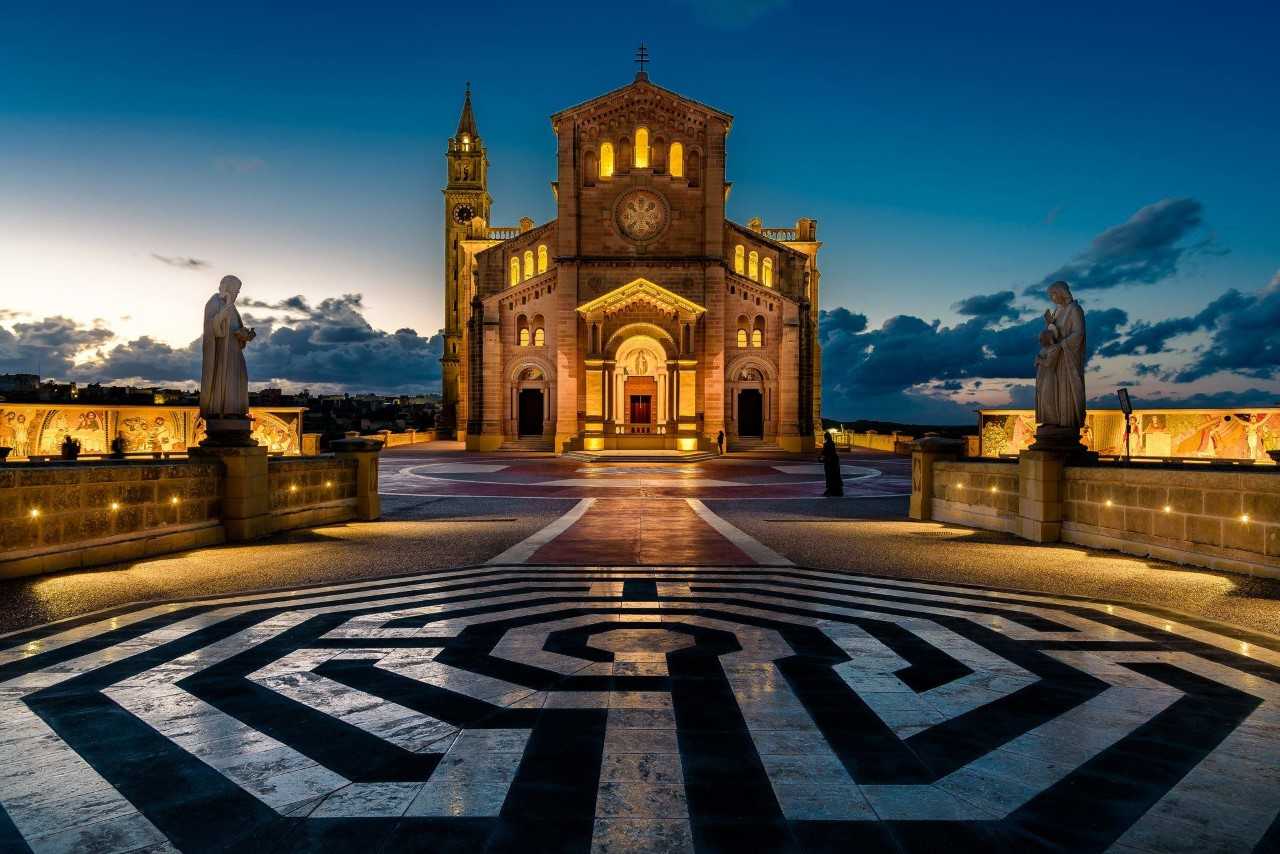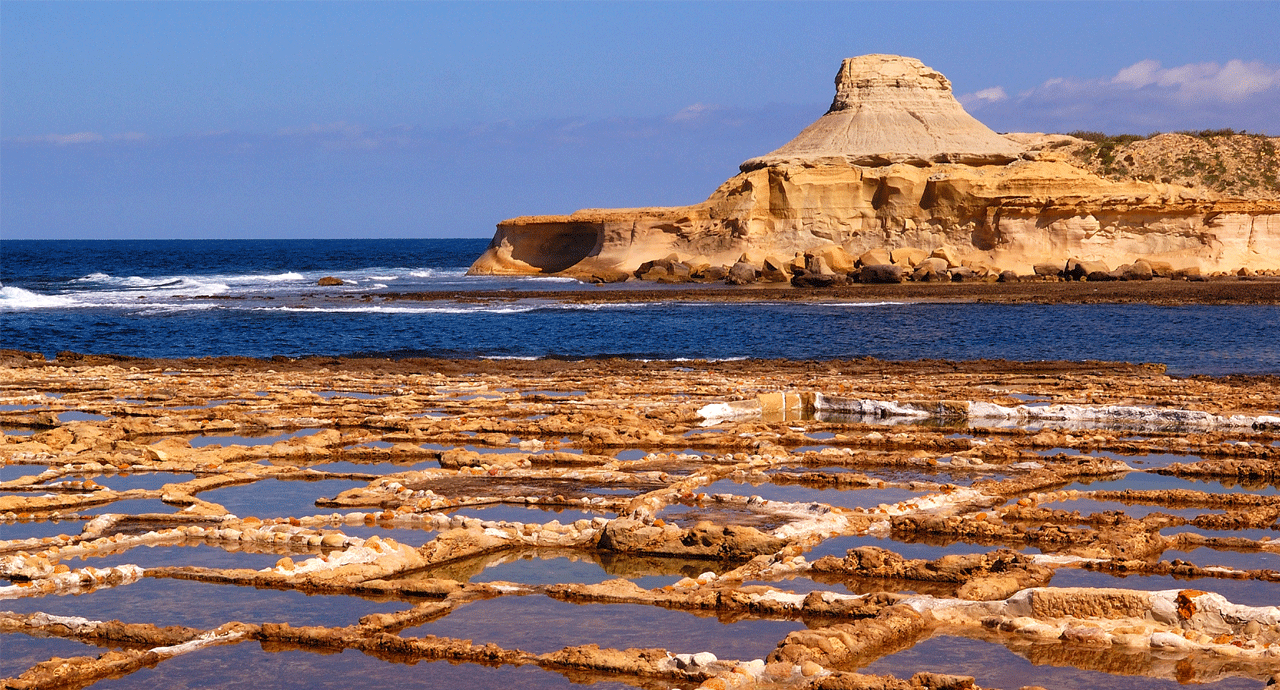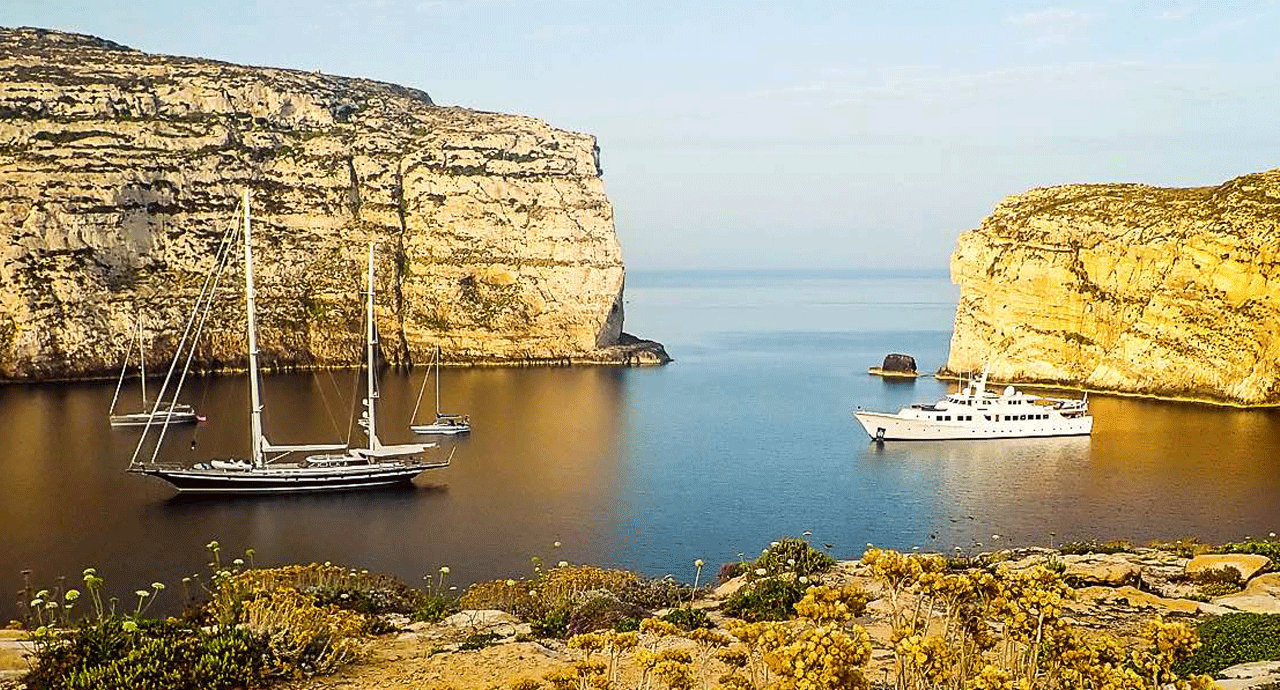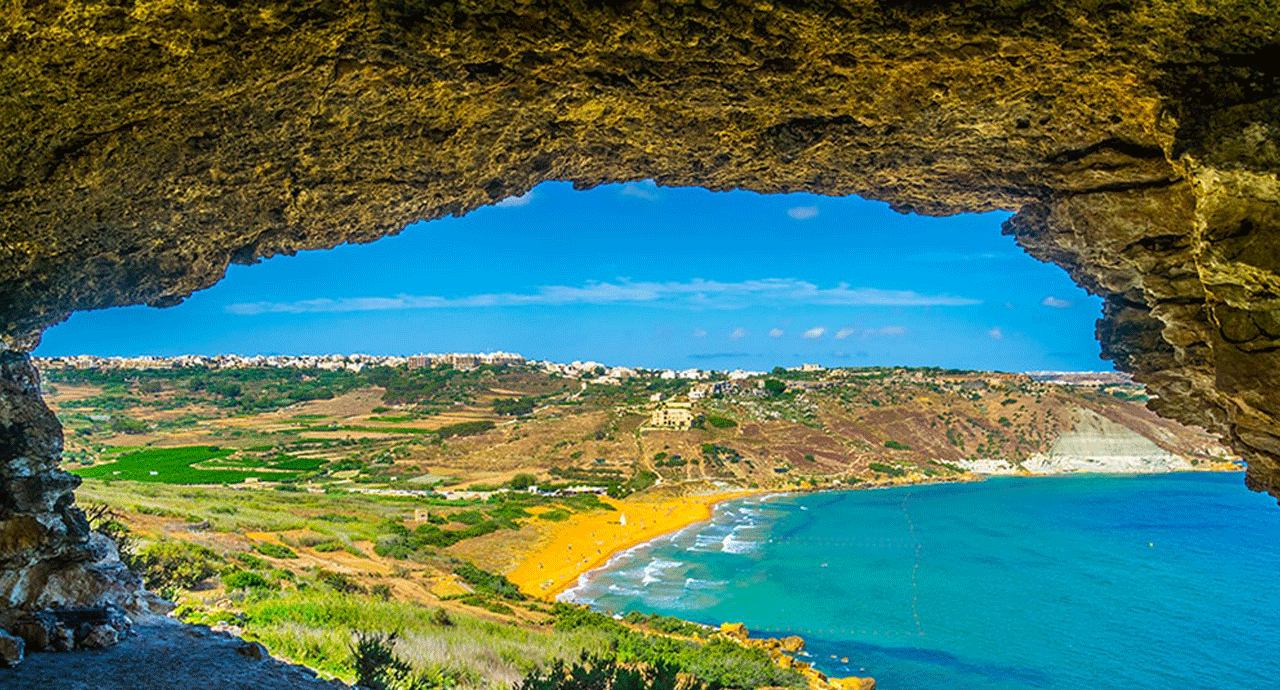Our Latest Blogs
from around the Maltese Islands
Gozo - The Sister Island
Gozo is the second largest island of the Maltese archipelago and one of the three inhabited islands. Gozo covers an area of 67 sq. kms, which is about one third of neighboring Malta, and is distinguished by an idyllic, more local character.
Gozo is a quieter place than neighboring Malta. The island has an agricultural character, there are fewer modern buildings here, and life seems to be more peaceful. There are also fewer tourists coming to Gozo. Sometimes, while walking around the further parts of the island, we do not meet anyone, and the silence will be disturbed by birds singing.
On the other hand, Gozo is like Malta in miniature. We find here very similar attractions - although there are of course less of them. Fortified citadel, megalithic temples, ubiquitous sandstone churches and buildings, cliffs, watchtowers from the times of the Knights Hospitaller - just to name a few.
Victoria Citadel
The most visited attraction on Gozo is the Citadel. This fortress, built on a hill, towers over the island's capital, Victoria (also known as Rabat), and has been defending its inhabitants since the Middle Ages. For many years it was the only place in Gozo where you could protect yourself from pirate attacks. In the same years, during the Medieval period, the inhabitants of the island were forced to spend the night in the citadel for safety.
The citadel is a kind of fortified city. Most of its present buildings were built after the arrival of the hospitals on the island, but there are also fragments from the Middle Ages.
Currently, the Citadel is an open museum and tourist attraction. While walking along the narrow streets, we can admire churches, historical buildings and fortifications. Entry to the fortress is free, but we can also visit four ticketed museums that were created in historical buildings.
Ta 'Kola windmill
Joannites, after arriving in Malta in 1530, found an underdeveloped society, alien to technical innovations. One of the technologies they introduced were windmills, which they had already built during their stay on the island of Rhodes.
Before 1530, Maltese mills were not very efficient. Horses or donkeys were used in the production of flour. An example of such equipment can be seen in the aforementioned Folklore Museum in the Citadel in Victoria.
Hospitallers built many mills during their reign, both in Malta and Gozo. One of the few fully preserved windmills is the Ta 'Kola windmill. It owes its name to the last miller, ?uzeppi Grech (better known as ?eppu ta 'Kola), who died on February 27, 1987.
The history of construction dates back to 1725 and the reign of the great master Antonio Manoel de Vilhena, who became famous as an ambitious builder. The first building existed only a few decades and was rebuilt at the end of the 18th century.
The building has survived to our times in its original condition (including the entire wooden mechanism) and today serves as a museum.
Gigantija: megalithic temples on Gozo
Although the best-known megalithic temples of the archipelago are those in Malta (Hagar Qim, Mnajdra and Tarxien), it is on Gozo that we find the oldest of these mysterious complexes of the Neolithic age. The ?gantija temples were also the first to be entered on the UNESCO World Heritage List.
The archaeological site of Gigantija consists of two temples that were built between 3600 and 3200 BC. The remains of these structures are among the oldest surviving man-made structures - although the locals believed that they were built by the giants who lived on the island. Hence the name of the archaeological site: ?gantija in Maltese, we can translate as a place of giants.
Some of the building blocks are five meters wide and weigh more than 20 tons. The shape of the complex is also mysterious - both temples were surrounded by a common external wall, and each of them had a separate entrance in the form of an arch.
The Gigantija complex is relatively well preserved (considering its age), although it is much more modest and much more austere than the aforementioned archaeological sites in Malta.
Rotunda of St. John the Baptist in Xewkija: the observation deck on the roof of the temple
Gozo, like Malta, boasts several impressive Catholic churches. One of them is the Rotunda of St. John the Baptist in the city of Xewkija, which we can see from many places on the island. A small church existed here in the 17th century, but after some time it became too small to meet the needs of the local community. In the middle of the last century, a decision was made to build a new temple. It would not be surprising, if not for the fact that the inhabitants of a small (and not very wealthy) community decided to erect a building topped with a dome 75 meters high and 85 meters in circumference.
Construction work began on November 19, 1951 and was completed after 20 years - on June 24, 1971. The whole project was carried out by the inhabitants of a small village, who worked as builders and at the same time collected funds to complete the construction.
Inland Sea: short boat trip and the non-existent Azure Window
The Inland Sea is a small bay surrounded by high rocks and connected to the sea only by a narrow passage (called a tunnel) that passes through.
The cove is close to the place where the Azure Window, destroyed by the storm, stood; rock formation which gained its popularity thanks to the series Game of Thrones. Unfortunately, after the collapse, the rock fell into the sea and no trace of it remained.
This is where you will be amazed by the sight of the small boat houses where fishermen keep their boats during periods of high winds and storms in winter. The Inland Sea is an iconic site for the island of Gozo. When the weather is fine you can take a small boat trip that will take you from the inland sea to the amazing open waters.
Dwejra Bay: Fungus Rock and The Watchtower
Dwejra Bay surrounded by cliffs, is one of the most picturesque places on Gozo. Access to the bay is protected by the Dwejra tower erected in 1651, the use of which was quite unusual. In addition to the standard coastal protection, it also acted as a guardian of a 60-meter-high limestone island, which is located right at the entrance to the bay.
This islet is known as Fungus Rock. The name refers to the scarlet cynomorium, an island plant that was formerly mistaken for a fungus and called the Maltese mushroom (fungus melitensis). This plant was very rare, and hospitals used it to produce drugs. Day and night guards defended access to the island, and the penalty for the theft of plants was death or, at best, sentencing to spend several years of slave life on one of the ships.
The Joannites were famous for many bold architectural solutions. It was no different in this case as well. In order to impede access to the island, they smoothed its lower part, and the transport between the top of the rock and the coast of Gozo was possible thanks to a primitive type of cable car.
Local residents sometimes use the name General’s Rock when it comes to the islet.
Watchtower and Xlendi salinas
The small Xlendi watchtower (Malt. Torri tax-Xlendi) was built in the mid-seventeenth century and is one of the Lascarisa towers, which was erected by the order of the grand master Giovanni Paolo Lascaris in the years 1637-1652.
Xlendi Bay: a picturesque bay and a small town
The watchtower and salinas mentioned in the previous point are located near the entrance to the deep and picturesque Xlendi Bay, at the end of which there is a marina and a small town of the same name. Although there are not many monuments in it, it can be a good place for a short break in one of the taverns. There is a small pebble beach near the marina.
Ta 'Cenc Cliffs
Gozo cannot boast of such high cliffs as the Dingli Cliffs in Malta, but the smaller island has nothing to be ashamed of. The Ta 'Êen? cliffs rising over 100 meters are no less picturesque.
The cliffs are located in the small town of Sannat.
Sanap Cliffs
Less than three kilometers east of the Ta 'Cenc cliffs, you will find another rock formation - the Sanap cliffs. A pleasant walking route stretches along the coast, where you will find several viewpoints and benches where you can relax.
It-Tokk Square
The name "It-Tokk" comes from the archain Maltese word for a meeting place. This square was the central and most important square of Rabat (Victoria) - the main village on the island of Gozo. The square gained its importance because of its location - in front of the Universita - the institutional building which also hosted the governer. In the past, It-Tokk Square was a great place to hear news from the rulers of the island. Today, you can still feel the spirit of the old buzzing atmosphere there - although Herald is no longer here. Many people still visit the square to enjoy the cafes, restaurants, vegetable and souvenir shops. This is where you enjoy the delicious Gozitan food that both locals and tourists rave about. The advantage is also affordable prices as well as the freshness and quality of natural products straight from local farmers.
Statue of the Risen Christ (Tas - Salvatur)
The statue was erected in 1979 and is still proudly located on the top of Tas-Salvatur Hill in Gozo. It is unknown to many that many of the statues had been on the hill before, but none of them has stood the test of time. The statue of the Risen Christ is by local artist Carmel Grech. Interestingly, due to the shape of the pyramid, many gozitans thought that the Tas-Salvatur hill was actually a dormant volcano. The hill is just 1.5 km from the village of Marsalforn. If you are driving by car, park off Marsalforn and then follow the path leading to is-Salvatur Hill. Although the route is not demanding, it should be remembered that some sections are quite steep. After reaching the top, you can fully enjoy the idyllic views of the island. Gozo's landscapes cannot be compared to anything else - the views across the valley, the Citadel and Marsalforn Bay are simply beautiful.




